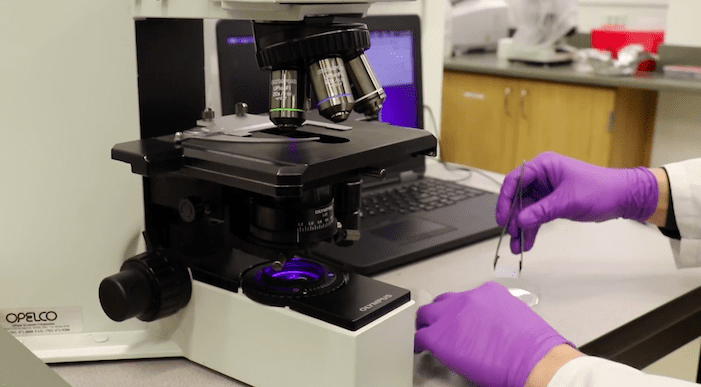The nanoprinting method enables printing of multiple molecules without damaging existing molecule layers – a perfect match if you want to fabricate delicate biochips.
Researchers at the City University of New York’s Advanced Science Research Center (ASRC) and Hunter College have come up with a novel solution to print biochips. They are using a nano-scale 3D printing process which combines gold-plated pyramids, LED light, and photochemical reactions to affix organic materials on top of biochips.
The process is known as tip-based lithography. It works by covering polymer pyramids in gold and mounting them onto an atomic force microscope. The size of the arrays is 1cm2. They contain thousands of little pyramids which have holes to enable light to pass through. In return, this ensures that light reaches certain surface areas on the chip beneath them.
Solving the single molecule challenge of tip-based lithography
The technology can be used in biomedical science to disable certain organic reagents on the chip surface without causing too much damage to them.
However, in the past, the process has been limited to just a single molecule.
The team at ASRC now seem to have solved this issue. They used microfluidics to expose the biochips to a combination of chemicals. Subsequently, they shone light through the pyramids and monitored the light’s reaction with the molecules. They found that the molecules adhered to the chip when light was shown on them.
Traditionally, tip-based lithography systems can overpower a chip and destroy the molecules. However, by using beam-pen lithography which traps and channels the light through small apexes, they were able to avoid this issue. As a result, the researchers could more effortlessly control the light. Furthermore, they were able to protect the organic materials already printed onto the biochip this way.
According to lead researcher and associate professor at ASRC’s Nanoscience Initiative, Adam Braunschweig, the new method could help scientists understand cells and biological pathways.
The technology should also ease the study of disease development and help explore issues such as bioterrorism agents.

Beam-pen lithography in progress. (Image: IEEE Spectrum)
Source: IEEE Spectrum
Website: LINK

